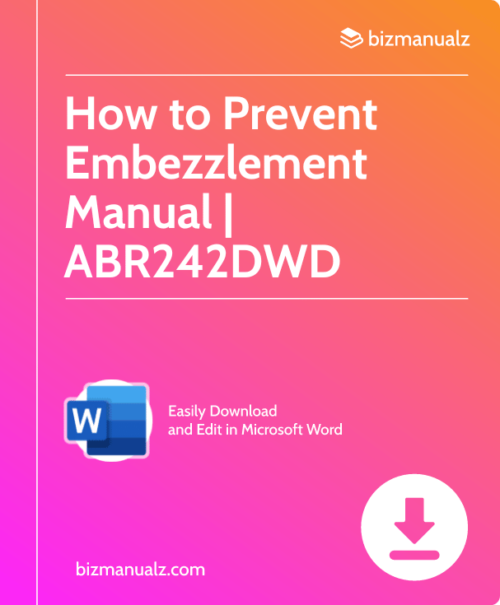How Can You Make Working for Your Parents a Success?
More than one son or daughter of a company founder has been coaxed into the family business in the years before dad’s retirement. Dad wants to back away from the business. “Planning for a graceful exit”, he says. “And”, he continues, “You are the heir to the company business.” Dad says that he realizes that it will take some time to transition out and transition you in. How can you make working for your parents a success?
The Corporate World
From your corporate experience, you will bring new ideas to the family business like concepts about intellectual property and compliance. In the corporate world, key inventions, know-how, customer lists, and the like are documented, managed within information systems, and counted as assets.
Similarly, those corporations mitigated risk through auditing to compliance standards and then sustaining compliance through development of clearly written procedure manuals. Documentation was coupled with staff training which reinforced compliance with the procedures. At the corporation, decisions were arrived at in working groups, with key functions in the company agreeing on how they would support a change. New technology? Has Engineering approved the design? Has Legal protected the intellectual property? Has Marketing positioned the change in the marketplace. Has Sales introduced the concept to key customers and provided them with a beta product to evaluate? Eventually, change was adopted and enforced by the chain of command.
Arriving at the family business, you may find a troubling lack of documentation of core know-how, and a lack of internal controls and cross-checks you were accustomed to in a public company, at least since passage of the Sarbanes-Oxley Act (SOX) law. This is when working for your parents starts to become difficult. When you bring up lax controls with your father, he may shrug it off. You start to realize that he is the center of everything at the company. The company was built on his great invention and know-how. He personally manages all the key accounts. He watches over the books and bank balances. He is the company’s knowledge management system. When he does delegate, it is usually to loyal, trusted staff, whom also are approaching retirement. It begins to dawn on you that your presence may be the first tangible sign of “succession planning” within the family business.
You begin to realize that the company is designed around your father. Separating the business knowledge from your father will be something like surgery. Is he even sincere about backing off? And if he is, you’re not sure that filling his central role is what’s best for the future of the company.
When working for your parents, you’re left with this realization: How do you capture the business processes, policies, and procedures from your father. And how do you do so without draining the personality out of the business?
 Sell Progress as a Retirement Plan for Dad
Sell Progress as a Retirement Plan for Dad
So if you’re that son or daughter stepping into the family business, you probably realize by now that if you want the business to grow profitably and continue as a leader in its markets after dad leaves, he can’t remain the personification of all company know-how, relationships and control. He has to gradually entrust the essence of his company to your efforts to document policies, procedures, systems and controls. And your job, as it’s shaping up, is like a cruise director that can organize all the right get-togethers, but can’t make anyone come to them.
Deep down, you know this. Trying to fill your dad’s shoes is not the way to go. And you couldn’t do it anyway, because you’re not your dad and not one of the employees would pretend that you were.
The first thing you have to think of when working for your parents is how to change their mind. The first customer for this change is your dad and other family currently with hands-on control of the closely held business. You’re going to have to sell it to them on the idea of replacing personalities with process.
So, how do you sell something to your father that he never embraced? And why would employees accept any policy or process so long as your dad is still there at the center of everything? They can always just ask him, right?
There is no easy answer to this. Clearly it’s a journey of small steps for everyone. Your job will be twofold: helping employees develop and adopt policies, processes and controls that will govern their work lives; and coaxing your dad to encourage decisions to be made by consulting policies instead of him. Work with employees to develop policies and controls and they will support them. Then work with your dad to accept policies, procedures and controls as codification of his way of doing things that have made the company successful.
This is the hard work of business succession planning. You face the task of transplanting your dad’s way of doing things into the people and processes of the company. Bit by bit, the man can be separated from the company, and the company will continue to function successfully.
What Business Buyers Are Looking For
Buyers will look to see if the founder is separable from the business. Replacing the key man with policies, procedures and systems transforms the company in the eyes of potential buyers into an asset that can sustain and grow without the founder. Will sales dry up or key know-how vanish when the founder clears out of the corner office? If they will, the company can’t compete in the buyer’s mind with other buying opportunities where the intangible assets of the company have been corporatized into the documentation, policies, procedures and systems of a company.
How will buyers know? In their due diligence, buyers will look to see if the company has up-to-date procedure manuals. They will look at HR and accounting compliance and evaluate the company’s vulnerability to legal trouble should allegations of harassment, fraud or abuse arise. What is the risk that management attention and capital will be tied up in law suits, allowing competitors to pull ahead? Buyers will talk to employees and observe how decisions are made. They will observe the operation and size up the viability of the company without the founder.
Your Leadership Style Should Build on Your Strengths
If our Baby-Boomer parents counted on hard work to get ahead, we Millennials have learned that they also have to work smarter. They have learned that they don’t have to make all the decisions. Millenials built careers on the leverage of teams, systems and controls, and relied less on a personal hard-driving style like their parents did. As the next in line, your leadership style nurtures continuous improvement: You expect those closest to the work to make decisions and act on them. You have many advantages when working for your parents. You have more patience for mistakes than inaction or constant checking-in with the boss. Examine your leadership style, and how you lead differently than your dad. Work to your strengths.
The Management Layer – a Mirror for Dad’s Management Style
Of course leading a transition will take some time. Will you have enough? As if you were a buyer sizing up the company, you should also size up the risk of challenge.
One indicator of how serious dad is about ceding management of the company, is the approach taken by his management staff in place today. They have had many years to develop patterns of work and action in response to your dad’s leadership style. Is the management independent-minded? Are they making real decisions, and acting on them? Or do they complain and shrug their shoulders about what they would like to do, but cite dad’s lack of support. Do they get in line with dad as quickly as possible?
Is the management staff fundamentally weak and simply implementing whatever dad wants, or is the management commitment there for it to work? Are they proactive and focused on meaningful change? Does every decision have to go through dad, or are there policies and procedures in place to govern decision making? In short, do managers manage or do they react to dad?
Working For Your Parents: Can You Do It?
So above, in broad terms, we have laid out the challenge of working for your parents– can you perform the transplant surgery without cutting out the heart of the business? Keep in mind we have not gotten into specifics about what you do in HR, what you do in accounting, in procurement, sales, marketing, etc. You can find the rest of the answers in our other articles.















Leave a Reply